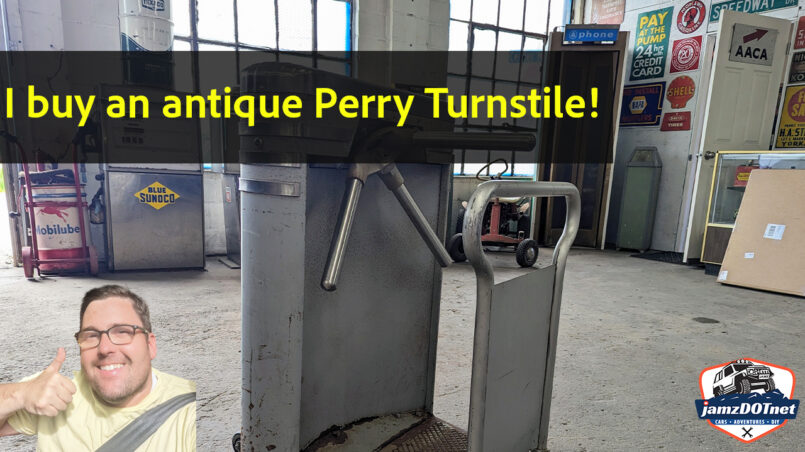What a cool piece of history for the building, Jason and Jack’s! This is a 1950s-era Perry Turnstile I picked up from a local theatre group at a college. They used it for a play and no longer needed it, so I was able to acquire it. It’s fully functional and super cool!
An antique Perry turnstile refers to a type of turnstile that was manufactured by the Perry Company, a renowned producer of turnstiles in the late 19th and early 20th centuries. The Perry turnstile was widely used in various public spaces, such as train stations, amusement parks, and stadiums, to control the flow of people and ensure orderly entrance and exit.
Perry turnstiles were constructed with durable materials, often featuring a combination of cast iron, brass, and wood. They were designed to withstand heavy usage and provide a reliable means of access control. These turnstiles were known for their intricate craftsmanship and elegant design, often incorporating decorative elements such as ornate scrollwork and engravings.
The operating mechanism of a Perry turnstile typically consisted of a rotating column or post with horizontal arms or bars radiating from the center. The arms would rotate in one direction, allowing individuals to pass through one at a time, while preventing unauthorized entry in the opposite direction. Some models included a coin-operated system where users would insert a coin to gain access, making them a predecessor to modern ticketing systems.
Over time, as technology advanced and new forms of access control emerged, the use of Perry turnstiles declined. However, due to their historical significance and aesthetic appeal, antique Perry turnstiles have become sought-after collectibles and decorative pieces. Many vintage turnstile enthusiasts, antique collectors, and historical preservation organizations value these artifacts for their cultural and nostalgic value.
Today, you may find antique Perry turnstiles in museums, private collections, or occasionally in public spaces that have retained their historical character. They serve as reminders of a bygone era when physical turnstiles played a crucial role in regulating crowd flow and ensuring controlled access in public areas.


